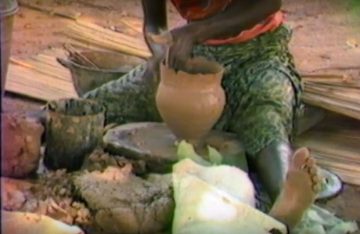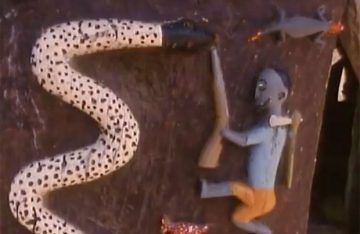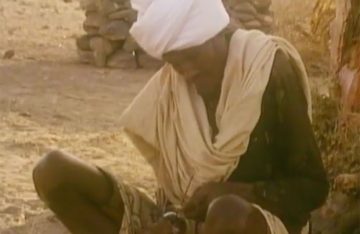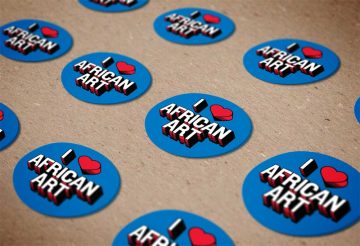The museum maintains a YouTube channel where we show everything from new and exciting conversations about contemporary African Art to historical films. In order to watch any of the videos just click on the image.
Sounds of Nollywood
Join with hosts Eme Awa and Georges Collinet, the voice of Afropop Worldwide, and special guests as they explore the music of Nollywood and its intersections with music, dance, and theater in this multi-episode series.
Wiki-a-thon
On March 19th we celebrated Women’s History Month by inviting our visitors to help create new entries in Wikipedia
Presented in conjunction with the exhibition I Am . . . : Contemporary Women Artists of Africa
For the latest info about upcoming events, follow us on EventBrite (free account required). #wikiathon #wikipedia #nmafa #smithsonian #womenshistorymonth
Conversation with Nollywood artists
Join Nollywood A-listers in a conversation about Art, Cinema, and the Power of Beauty for the global launch of Iké Udé: Nollywood Portraits
About this event
Touria El Glaoui, founding director of 1:54 Contemporary Art Fair, hosted a dynamic conversation with Eku Edewor, Alexx Ekubo, Enyinna Nwigwe, and Joke Silva, touching on themes such as standards of beauty, self-love, and the power of art.
In conversation
- Iké Udé, the artist
- Eku Edewor, named “Nollywood’s Most Daring Style Star” by Vogue magazine
- Alexx Ekubo, award-winning actor, model, producer, and Pulsemagazine’s 2014 pick for sexiest man in Nigeria
- Enyinna Nwigwe, actor, producer, and Wedding Party star
- Joke Silva, one of the most successful and most influential actresses in Nigeria
The Eliot Elisofon Archives and Warren M. Robbins Library have an extensive collection of films about the content of Africa and its peoples. We are planning on making some of them freely accessible to the public. Please visit this page in the future for more films.

The Hands of the Potter: Tombo Monyanga, Congo, Central Africa, November 1985.
Production of The National Museum of African Art.
1991.
26 minutes.
Credits: Cinematography and fieldwork, Raymond Lanfranchi; editing, Philip L. Ravenhill; off-line editing, Office of Telecommunications, Smithsonian Institution; on-line editing, Interface Video Systems, Inc.
Summary: The film documents the making of three pots by hand. It follows the work of the woman potter from the beginning of shaping the clay to the baking and cooling process. The pots are hand spun on a rock and coiled built and then fired in an open stack of twits and logs. The hot pots are plunged into bowls of liquid. The heat of the pot causes the liquid to boil leaving the surface with wavy patterns.

Change and Continuity in the Art of Mali
Toga Nu and Cheko:
Change and Continuity in the Art of Mali
1989
Production of the National Museum of African Art
1989
28 minutes
Credits: Produced by Staniski Media Resources for the National Museum of African Art
Summary: Toga Nu and Cheko: Change and Continuity in the Art of Mali explores two dynamic forms of art in present-day Mali, West Africa.
For the Dogon peoples, the meetinghouse, or tofu na, is the centerpiece of each village. Men gather there to discuss matters involving the entire community. Its massive millet-stalk roof is supported by columns masterfully sculpted with figures in high relief.
The Bamana people have developed a unique form of communal theater. called Cheko. The principal actors in cheek performances are colorful, animated puppets. Some of these puppets are small enough to be manipulated by hand. Others tower over the rooftops of the village and require two or more people to move them.
These fascinating Dogon and Bamana works of art depict both traditional and contemporary themes. They vividly show how art continues to evolve in African today.

Arts and Architecture among the Gabra Nomads of Kenya.
NAGAYATI: Arts and Architecture among the Gabra Nomads of Kenya.
1991
Produced by Peter Oud, Film and Photography for Development Word, for the National Museum of African Art
1991
50 minutes
Credits: Produced by Peter Oud, Film and Photography for Development Word, for the National Museum of African Art
Summary: NAGAYATI (“BE IN PEACE”) explores the arts and architecture of the Gabra Nomads in northern Kenya, East Africa. The film documents a Gabra marriage ceremony, in the course of which a new house and its furnishings are created. The Gabra possess an aesthetic unique to their own lifestyle and environment. It is aesthetic born of the strongest demands of transient life in an arid region, the paucity of available resources, and the importance of the ritual process of marriage. By integrating the art and technology of building and transport, women fulfill the roles of designers, builders, owners, and users.
